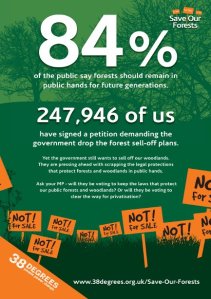The Sheila McKechnie Foundation is running it’s annual People Power Conference tomorrow. It looks like a fascinating line up of speakers. Sadly I can’t make it in person although I’ll be doing my best to follow via twitter.
 One of the sessions that stands out to me is the panel debate on ‘The Legacy of Make Poverty History‘, it was one of the first campaigns that I worked on professionally, so I’m interested in what the panel have to say about how we can still learn from the campaign.
One of the sessions that stands out to me is the panel debate on ‘The Legacy of Make Poverty History‘, it was one of the first campaigns that I worked on professionally, so I’m interested in what the panel have to say about how we can still learn from the campaign.
The Foundation have managed to organise an impressive line-up of speakers who were involved in the original campaign, including;
- Adrian Lovett, now European Director of ONE but working at Oxfam during 2005.
- Deborah Doane, Director of the World Development Movement, one of the organisations that was most outspoken about some of the tactics used in the campaign.
- Glen Tarman, Head of Advocacy at BOND, but working for the Trade Justice Movement during the campaign
- Kirsty McNeill, Founder of Themba Consultancy, formerly one of Gordon Brown’s speech writers and working at the Stop AIDS Campaign in 2005).
If I was able to attend here at the questions I’d be asking;
1. If we’d had the research and thinking done by the Common Cause team around the role of frames and values in campaigning available to use back in 2004 what might we have done differently?
2. Have we done enough to capture the learning from the campaign and share it with others across civil society? To my knowledge there has only been one significant academic study of the campaign by Nick Sireau. Do we need to be doing more to encourage academics to study our campaigns to help us increase our understanding of what works?
3. Make Poverty History was one of the first campaigns that effectively utilised email as a tool for action, building an email list of hundreds of thousands of individuals. How much should campaign movements like 38 Degrees and Avaaz thank Make Poverty History for demonstrating the effectiveness of this campaign target? How much impact did the e-mail actions actually have?
4. Tony Blair wrote in his memoirs that the campaign worked because ‘Bob, Bono and the NGO alliance had mounted an effective campaign…by demonstrating the breadth of public support for action on Africa. It was done cleverly, with them always giving enough praise to the leaders to encourage them’. I’d be interested in knowing if the panel agrees with the statement and if we need to do more to praise and encourage our targets?
 1 – Campaigns Needs Leaders
1 – Campaigns Needs Leaders Fundraising for adverts – The campaign isn’t the first to invite supporters to make
Fundraising for adverts – The campaign isn’t the first to invite supporters to make 


